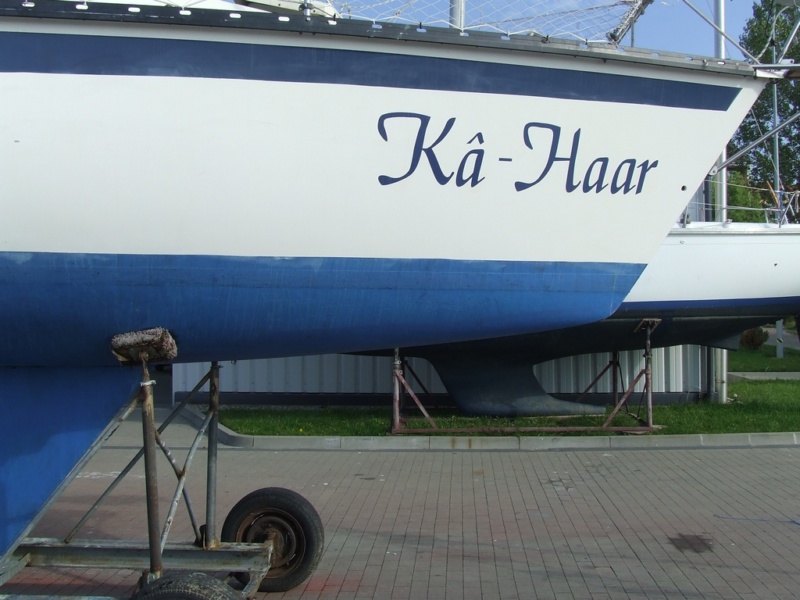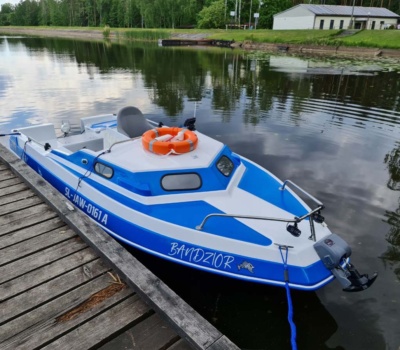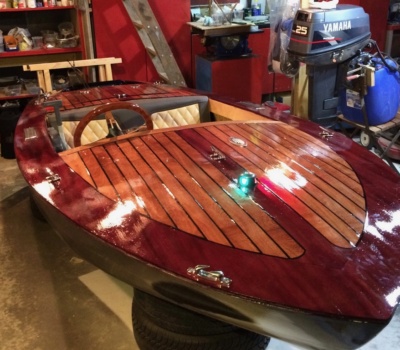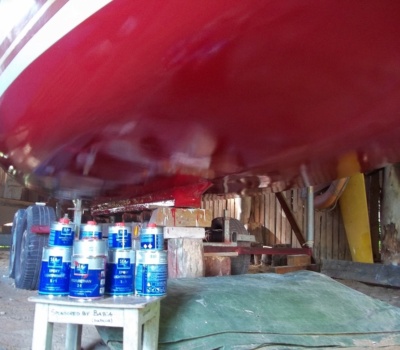Październik 2015, tekst oraz zdjęcia Piotr6 (www.sailforum.pl). „Antyfouling Sea-Line użyłem dwa sezony temu (w 2014r.). Przed rozpoczęciem sezonu 2015 drewniany ster „świeżo zabezpieczony” naturalnym lakierem olejnym Le Tenkinios pomalowałem farbą przeciwporostową (antyfouling) Sea-Line (w dwóch warstwach).
Antyfouling – dokładniej reszta farby znalazła swoje miejsce na kadłubie i ku mojemu zdziwieniu nie znalazłem różnicy w jakości zabezpieczenia przeciwporostowego w porównaniu do tego wykonanego rok wcześniej. Podobnie zdziwiony był bosman na co dzień slipujący jachty w mojej marinie. Stwierdził, że mnóstwo jachtów jest oblepionych muszlami, a na moim Ka-Haar nie znal nic. Przygotowując się do zimowania umyłem cały jacht, stąd widoczne są na zdjęciach białe zacieki, pozostałości środka do czyszczenia żelkotu.

Antyfouling Sea-Line kontra porastanie na Zalewie Szczecińskim wynik 2:0.
Trzecia runda „Antyfouling Sea-Line kontra porastanie na Zalewie Szczecińskim” już za kilka miesięcy. Mój plan zimowych prac remontowych przy dnie to antyfouling czyli zabezpieczenie farbą przeciwporostową niewielkich uszkodzeń mechanicznych z dna oraz steru (max 10 cm2). Zimowe wieczory, zamiast pracować ciężko przy odnowie powierzchni przeciwporostowej z (antyfouling u), poświęcę na wspomnienia z tegorocznych rejsów.”
Poniżej linii wody stosujemy Antyfouling Sea-Line, czyli farbę przeciwporostową zabezpieczającą przed porastaniem. Antyfouling Sea-Line® jest farbą samopolerującą, przeznaczoną dla jednostek o maksymalnej prędkości 40 węzłów (ok.73km/h). Antyfouling Sea-Line skomponowany na bazie żywic, tlenków miedzi oraz biocydów, podczas pracy uwalnia aktywne składniki nie dopuszczając do porastania jednostki. Dla prawidłowego zabezpieczenia kadłuba powłokę przeciwporostową (antyfouling) nakładamy o 5 cm ponad prawdziwą bądź przewidywaną linię wody.

Remont hiszpańskiej motorówki Ducauto caribe. „Przecięta na pół, wybebeszona i zrobiona według własnej koncepcji. Prace

Dzięki uprzejmości Pana Zbigniewa otrzymaliśmy informację, że preparaty czyszczące Sea-Line zostały wykorzystane do mycia i

Dziękujemy Panu Wojciechowi z Poznania za przesłane zdjęcie z budowy. „Budując „DISCO VOLANTE” wymarzoną motorówkę

„Mogło być lepiej, ale jestem zadowolony. Nie było łatwo, bo robota na leżąco, zdjęte podpory,
Antyfoulingu selfpolishing Sea-Line i HARD Sea-Line nie są przeznaczone na powierzchnie aluminiowe. W ich skład wchodzi tlenek miedzi, który w styczności z aluminium powoduje powstawanie korozji galwanicznej. Specjalnie na aluminium oferujemy Państwu samopolerującą farbę antyporostową ALU-PLUS, która oprócz znakomitej przyczepności do aluminium cechuje się również zwiększoną o 30% skutecznością w porównaniu do tradycyjnych farb antyporostowych.
Tak, można pomalować dno łodzi farbą poliuretanową ze względu na jej wysoką wytrzymałość mechaniczną. Takie rozwiązanie zalecamy kiedy łódź nie jest wodowana przez dłuższy czas, nie jest narażona na porastanie.